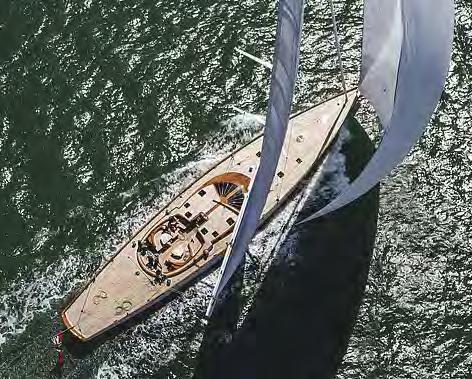
15 minute read
Timber Passion
Meet Ross Muir at the 2023 Wooden Boat Festival Hobart 10th - 13th February
Ross Muir
A TIMBER PASSION
By Narayan Pattison

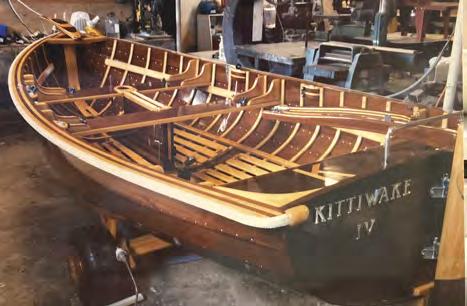
Ross has built Kittiwake IV. A 12-foot cadet dinghy built of Australian Red Cedar and Huon Pine
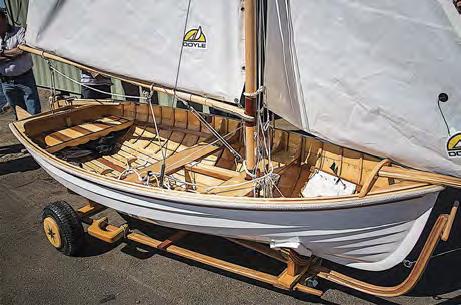
Many Brisbane boaties will know Ross Muir from his work managing Muir Marine in Manly for 30+ years. A local S.E.Queensland boating legend, Ross has tirelessly handcrafted two timber dinghies, paying homage to his family’s classic yachts from the 1900s. The Muir contribution to boating is huge, stretching well beyond Ross’ time in Manly, to his father Jock’s boat building business in Hobart’s Battery Point in the mid-1900s.
It was at the family boat yard that Ross began his own apprenticeship in the early 1960s. Ross developed his boat-making skills, while his father was building Balandra for the Admiral’s Cup team in 1967. Not long after, his father built Trevassa, which he finished in 1971. The former owner later sold Trevassa to the Muir family in 2012. Ross, along with his brothers John and Greg, painstakingly restored the yacht. In particular, Ross handcrafted a beautiful custom steering wheel and table, so it was fitting that Ross named his recent Huon Pine timber dinghy Trevassa Too. After finishing his apprenticeship with his father in the 1960s, Ross began running his own successful marine boat-building, rigging, and chandlery in Hobart. In 1987, Ross made the decision to move his family up to Manly, where he still lives today.
The Muir Marine business opened in 1988, after Ross took over a local chandlery shop. True to his Tasmanian roots, Ross has kept the business focused on boat rigging and chandlery, and has kept the shop open seven days a week, with the help of his son, Jason. Now, 50 years on, the Manly harbour is absolutely filled with boats. It is the biggest boat harbour on the east coast, and the second biggest in the country.
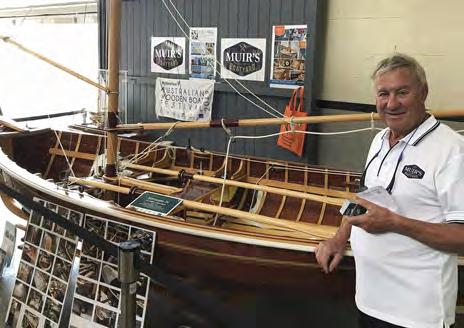

Ross, along with his brothers John and Greg, painstakingly restored Trevassa, originally built by their father.
To successfully build the two classic dinghies Ross split his time between his Manly workshop, where the accessories were made, and Hobart, where he did all the hard yakka on the boat hulls.
Both of the timber dinghies are tributes to the work of Ross’ family and friends. The first dinghy built was the 10-foot Trevassa Too, crafted out of Tasmanian Blackwood and Huon Pine. The second dinghy, Kittywake IV, is based on the 1921 cadet clinker dinghy design. The cadet dinghies later moved to fibreglass, so this is the first timber cadet to be built in about 40 years.
As one can imagine, the building process for these dinghies was extremely labour intensive. Ross put about six months of labour into each one. Two-thirds of that time was spent constructing and varnishing the hull and trolley in Hobart. In his Manly workshop, Ross
Ross named his recent Huon Pine timber dinghy Trevassa Too
handcrafted all the remaining accessories, including the spars, oars, bowsprits, paddles, bailers and rudders. Timber boats have always been his passion, and building these dinghies lets Ross revive the family traditions he learnt as an apprentice back in the 1960s.
The two dinghies are proof that Ross clearly loves Australian timber. Huon Pine is beautiful to sand, and to work with, it is some of the best timber in the world. Growing only on the west coast of Tasmania, it has a lot of oil in it and is very much like teak. Trevassa Too is all planked and ribbed in Huon Pine, including the trims on the accessories. Kittywake IV has a combination of Huon Pine and Australian Red Cedar, which has been used since the early days because it is light and strong.
Timber boats certainly are not for everyone because the costs and maintenance involved can be extreme. However, for people like Ross Muir, who love timber and the history of boating, nothing beats classic wood.

PONTOON FENDERS
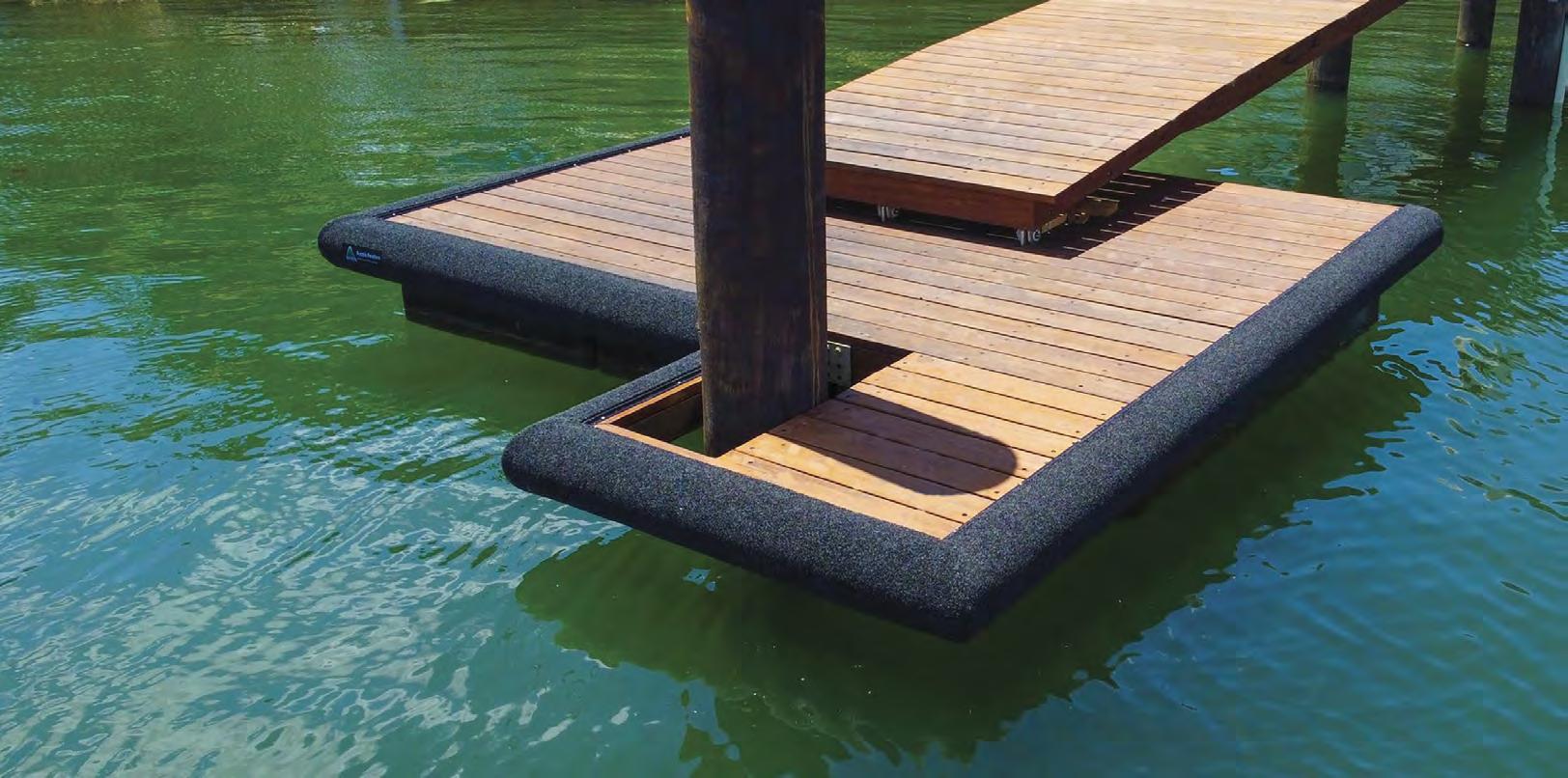
Designed to protect your most important asset and make your boating easier. Our Aussie Fenders are manufactured in Australia from only the best available materials to enhance durability, protecting your boat from unsightly rub marks. Manufactured in our state-of-the-art manufacturing facility by highly experienced sewing machinists and installation staff. Aussie Fenders will enhance the appearance and functionality of your pontoon, jetty or marina berth.
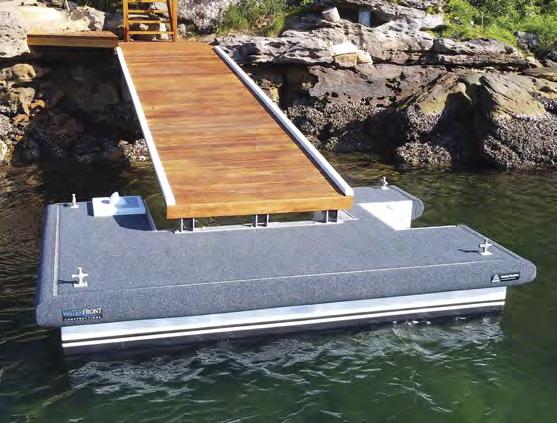
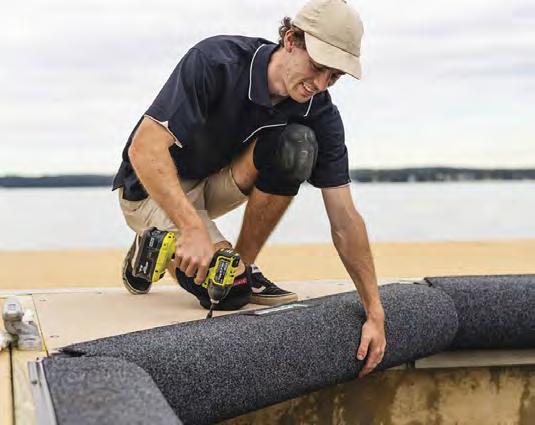
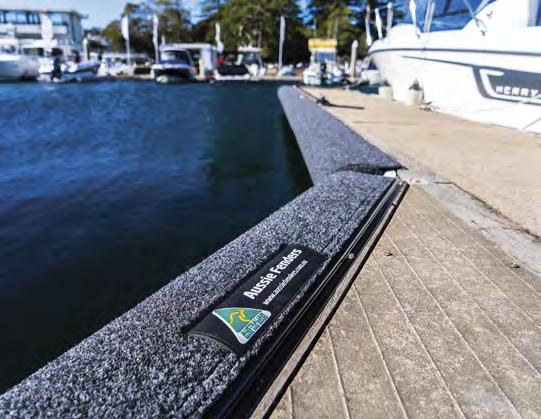
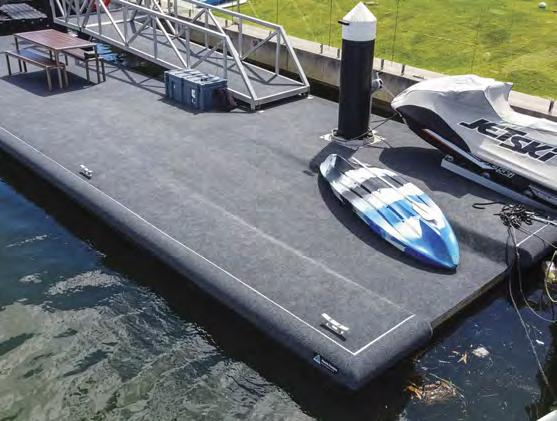
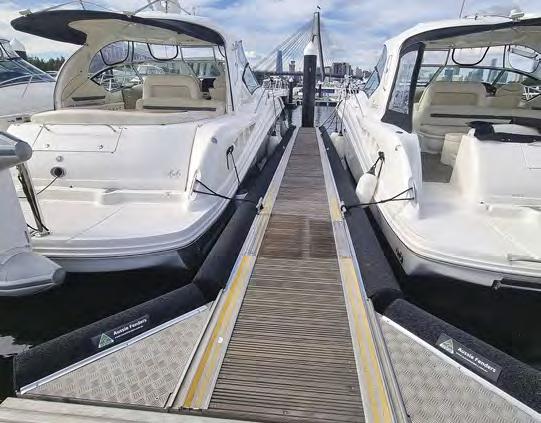
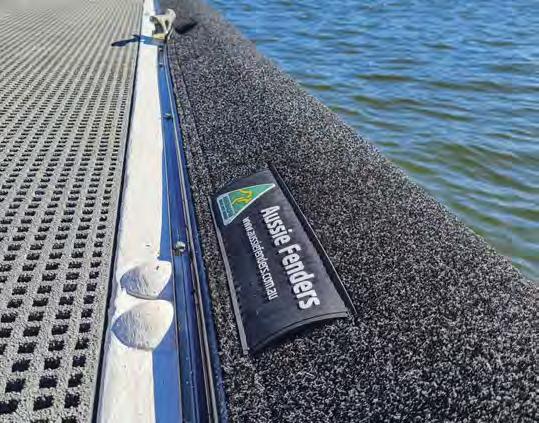

YAMAHA HELM MASTER EX NOW GUIDING MARINE RESCUE
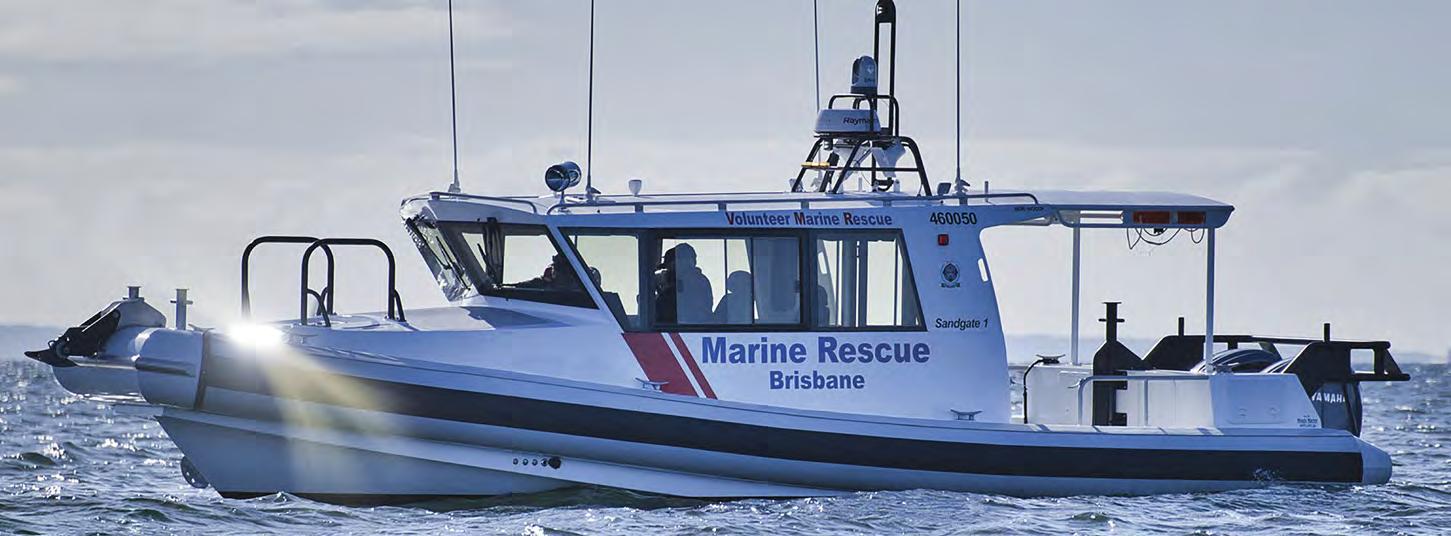
Yamaha has once again taken marine technology to the next level with the release of the game changing Helm Master® EX boat control system.
In a marine-industry first, Yamaha has developed a joystick and integrated control system that can now be paired with a single outboard engine - in addition to twin, triple and quad set-ups - giving Australian boat owners unprecedented control over their craft and access to the most advanced boating and fishing technologies on the market.
Helm Master® EX is more than just a joystick, it is a complete integrated boat control system that makes getting to your fishing spot easier and allows the skipper to hold to a chosen fishing location at the touch of a button.
There are four levels of Helm Master® EX.
Level one of Helm Master® EX incorporates the completely new, upgraded digital electronic control and CL5 touchscreen display. There is also the option of an all-new slimline electronic key switch panel with keyless remote.
The second level sees the addition of Yamaha’s all-new plug-and-play, bolt-on digital electric steering. This system takes marine steering to the next level, with extreme smoothness, precision and customisable steering feel. It uses minimum battery capacity as it only draws power when in use. This all-in-one, pure electric steering, eliminates the need for hydraulic pumps, valves and hoses - removing weight and allowing a tidy bilge and transom area.
Level three introduces the all-new Yamaha Autopilot, which comes with built-in single touch functions that makes navigating and getting to your destination easier and quicker. A highlight of this system is Track Point, which when paired with a compatible multi-function display, allows the vessel to pilot automatically along a set of waypoints and decelerate on arrival at the final destination.
Finally, premium level includes the full manoeuvrability joystick control. This stylish and ergonomic controller provides simultaneous control over shift, throttle and steering, in one easy-to-use joystick, which can be used for low speed manoeuvring or in conjunction with many of the built-in Helm Master® EX functions. The successful applications for Yamaha's Helm Master® EX boat control system continues to expand. It is now further improving on-water safety and providing peace of mind for Brisbane’s recreational boaters.
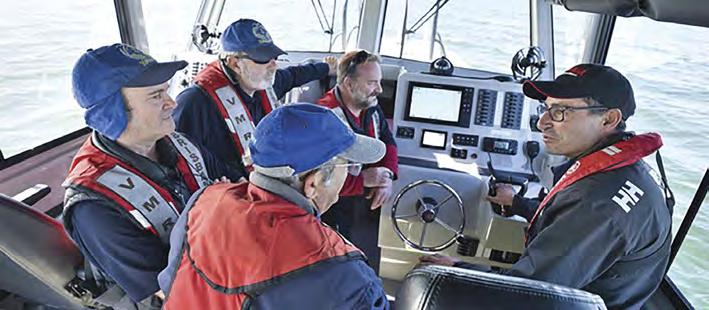
The team from Brisbane Marine Rescue recently took delivery of its new, Brisbane built Woody Marine rescue boat fitted with the full Helm Master® EX system, controlling a pair of Yamaha 300hp outboard engines.
Brisbane VMR’s president, Thomas Grice said joystick control provided by Yamaha's Helm Master® system provides excellent assistance with rescue operations. "It's especially helpful when dealing with the boating public out on the water," he said. "Conditions can get rough out on the bay, but the Helm Master® system allows us to pull up alongside another vessel and sit steady while we chat with the occupants and coordinate a rescue - if that's what is required."
Thomas also revealed that the system comes in handy when they are towing stranded vessels home, with the navigation system that's integrated into Helm Master® allowing them to set a course with a comfortable and steady speed.
Familiarising themselves with the new boat and the Helm Master® EX system at a recent training day, the volunteer crew from Brisbane Marine Rescue were amazed at how much easier and safer Yamaha's advancements in navigation technology had made the sometimes-dangerous tasks they undertake.
"Even after this short time using the system, we can already see the benefits," said Thomas. "When you're under pressure in not-ideal weather conditions, we now know we can rely on the boat as well as the Yamaha motors and Helm Master® system to hold us in position while we do what we need to do. It's going to be a real game-changer for us."
Stuart Smith, Commercial Development Manager for Yamaha Motor Australia was on hand to watch the volunteers from Brisbane Marine Rescue putting the new boat through its paces. He said it was great to see the Helm Master® EX system moving from a recreational application, into on-water emergency services such as policing and rescue work. "We need these guys when we are at our most vulnerable," he said. "They need to be sure that the product they use is reliable and durable, and with Yamaha and Helm Master® EX that's what they have got." www.yamaha-motor.com.au
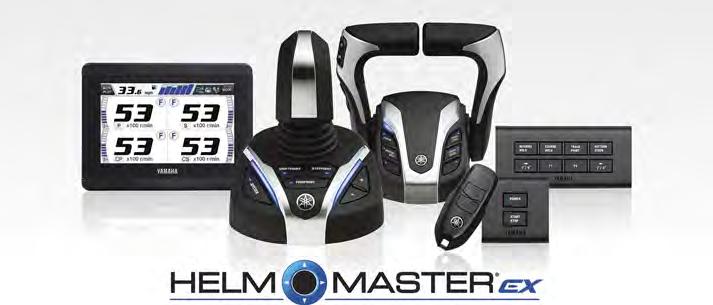
GEIST the 111-foot sloop

The sailing yacht GEIST, a 111-foot sloop from the Spirit shipyard in the UK, has now been launched. Looking at the vessel for the first time, it is difficult to discern whether it is indeed a seaworthy yacht or more so a work of art. The owner who commissioned the build, however, wasn’t seeking to pay homage to the tradition of classic wooden tall ships; GEIST was about shifting standards and generating inspiration for more sustainable actions in yacht building practices. We spoke with the German owner, and Pantaenius customer, about the meaning and spirit of sailing.
THIS MIGHT SEEM OBVIOUS TO SOME, BUT WE'D STILL LIKE TO HEAR THE ANSWER FROM YOU. WHY DO YOU SAIL?
Sailing is so natural to me that I do not really know the answer to that. It is part of my life and was already part of the life of my father, who was very successful sailing dragon boats. The passion has been laid in my cradle, so to speak. I have never not sailed. This has had a lasting effect on me and makes me constantly seek closeness to water and the elements.
GEIST IS THE LARGEST WOODEN YACHT CONSTRUCTED IN THE UK SINCE THE J-CLASS SHAMROCK V WAS BUILT. WHAT MADE YOU DECIDE TO GO WITH WOOD FOR SUCH A LARGE PROJECT?
The point was to demonstrate what is possible. Of course, it would be even more sustainable not to build a ship at all, but I am convinced that it is only by continuously challenging established standards that we can bring real innovation to the fore and allow ourselves to live the way we want to, while remaining sustainable. The yacht industry is booming, so why not deliver a vision that shows it can be done differently: that it is possible to build a light, fast, dynamic and elegant vessel that at the same time meets the most modern standards in terms of energy efficiency. Wood has emerged as the perfect material in this regard because it is extremely flexible, noble and versatile, but unlike many other materials, it can be obtained and recycled in a very controlled manner.
ONE OF THE LEADING YACHTING MAGAZINES HAS REPORTED THAT THE YACHT IS ONE OF THE MOST EXTRAORDINARY EVER BUILT. WHAT MAKES GEIST A STANDOUT YACHT FOR YOU?
Actually, the yacht follows very familiar requirements in its basic layout. It is the perfect charter yacht booked by four friends with their partners, but implemented in a very generous space. It offers an excellent overview on deck and always lets you feel the proximity to the water despite her size. For me, the most important thing was that GEIST met these requirements. At some point I realized that sailing together with friends only works if there is enough space on board, because by now everyone has created their own little family. So the path from my 52-foot Spirit to 111-foot GEIST was, in part, also quite pragmatic. Her elegance, of course, is also a unique quality for me. The shipyard meticulously responded to every one of my wishes and contributed a number of innovative ideas themselves. The interior design is exceptional and there were almost no limits placed on me by the designers during the planning. This is another aspect recognized by people who are passing by. GEIST has the charm of a wonderful vintage car and at the same time something ultra-modern.
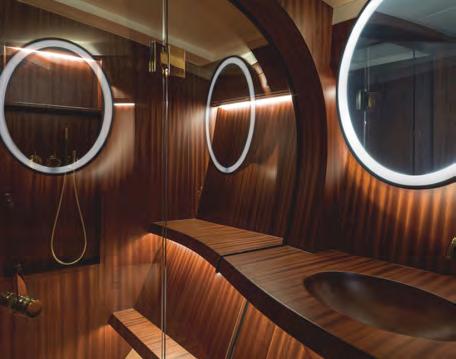
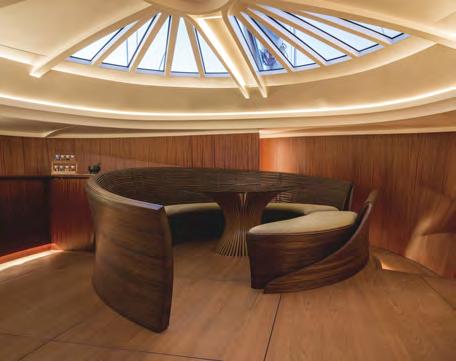
FROM THE BEGINNING, YOU HAD A CLEAR VISION OF WHAT GEIST WAS SUPPOSED TO ACHIEVE IN TERMS OF SUSTAINABILITY. CAN YOU EXPLAIN THAT VISION?
I wanted to show that it does not have to be a compromise to design a luxury object like a yacht and at the same time measure up to the demands of our time. We cannot pretend we do not know about the impact we have on the planet through our consumerist behaviour. Yachting in particular, however, still seems pretty divided in this regard. In addition to using recycled and sustainably sourced materials as much as possible, the yacht should avoid fossil fuels whenever feasible and make the best use of available renewable energy. When we sail, we continuously generate power that is fed back into the batteries. The propulsion system regenerates the battery banks through the rotation of the propeller shaft while the yacht is under sail. For up to four days, the fully charged batteries allow us to use all the yacht's amenities, including air conditioning and hot water, without needing a generator or shore power. The two builtin
generators are actually only due to class conformity and serve as a backup in case of a real system failure. This ambition has made everyone involved go above and beyond and work very closely together. We have been able to reduce the consumption of oil in the hydraulic systems to a minimum, saving not only waste but also weight.
A benchmark that applies to almost every part on board. To be even more efficient, the hydraulics also allow the boat to operate in an eco-mode. Only in emergency situations or during regattas do we fully exploit the possibilities and work in a much faster, but less economical mode. Above all, I want to leave nature as I found it. That is why wastewater is passed through a treatment plant before it is discharged. I think everyone involved challenged each other. Yes, the sustainability aspect was my wish as a client but everyone shared my vision.
THE YACHT IS NOT DESIGNED TO ACCOMMODATE A LARGE CREW. HANDLING AND LAYOUT ARE DESIGNED FOR SHORTHANDED SAILING IN AN ALMOST UNCOMPROMISING WAY. DO YOU ALWAYS SAIL YOURSELF?
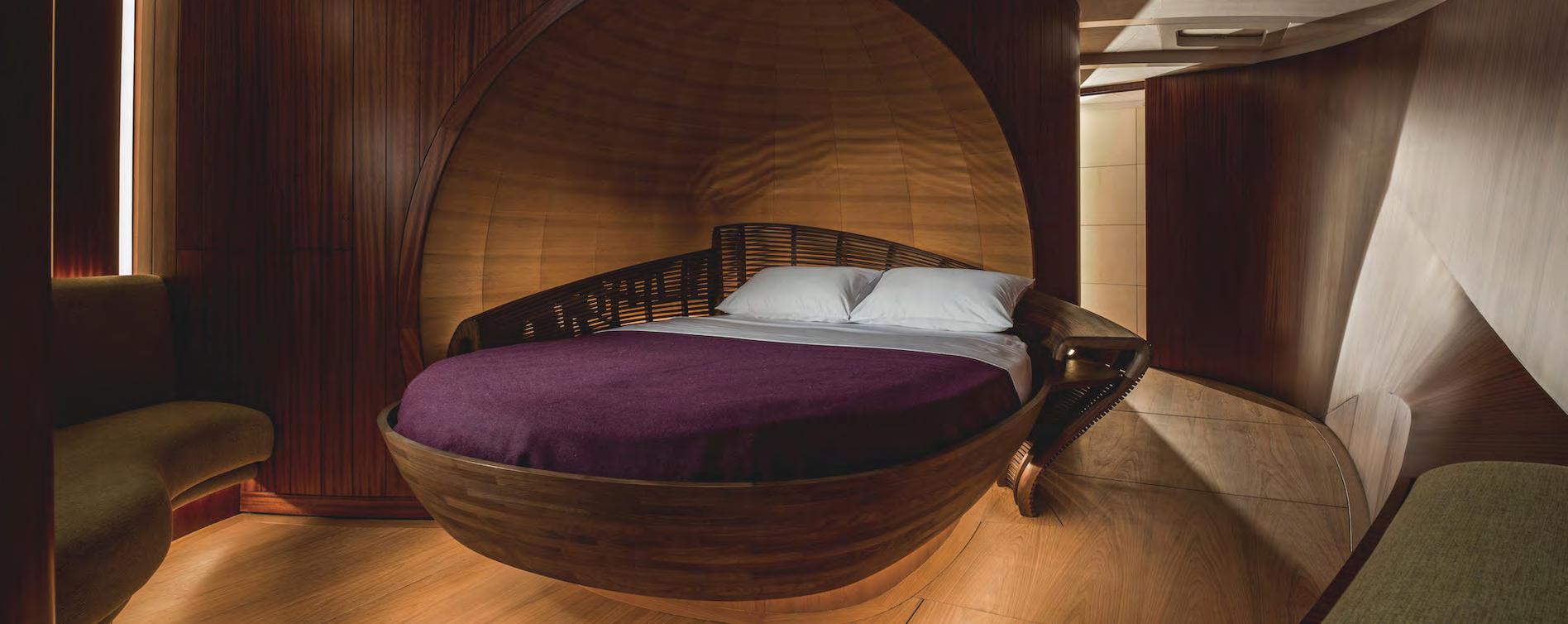
The goal was to be able to operate the ship alone with friends and family. I actually prefer to sail myself, but even GEIST cannot do without a professional crew. Maintenance alone requires specialized personnel. However, even here, the technology on board is a great help, because troubleshooting is made possible remotely - thanks to a sophisticated cloudbased monitoring system, similar to that used in modern cars. At the end of the day, of course, the ship should be ready when you want to use it, and unfortunately, I do not spend nearly as much time on board as I would like.
THE WORD COMPROMISE LEADS US TO THE LAST QUESTION: WERE YOU REALLY ABLE TO REALISE EVERYTHING YOU ENVISIONED? MOREOVER, IF SO, WHAT IS THE CONSEQUENCE? ARE YOU EVEN MORE INSPIRED NOW AND ALREADY PLANNING THE NEXT PROJECT?
Of course, it was incredibly complicated. That is probably why many people are afraid of turning their yacht into a supposed million-dollar grave by using new, innovative technologies. However, it really worked better than you might imagine. I have the shipyard to thank for that, but also the project management. Now and then, there were points that were discussed controversially. How narrow can the boom be? Where can weight be saved? But, as I said before, I never had the feeling that there were different sides in these discussions. Everyone was working towards one goal. This worked so well that some of SY GEIST's ideas have been established as permanent components of the Spirit program. Especially in the refit area, I think there will be a lot of electrification in the future. My next project is an all-electric and foiling tender in the style of the legendary Bystanders, with a range of 100 nautical miles. I am convinced that there is huge potential for more sustainable designs in yacht building, that are currently only being exploited in rare cases.
Photos by spirityachts.com
www.pantaenius.com.au
